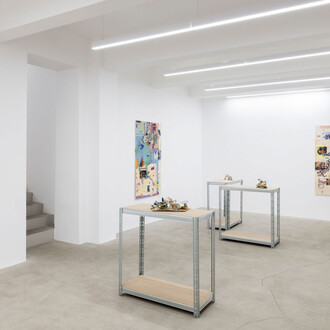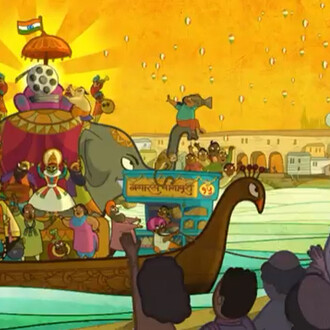From large installations to small objects, sculptures to compositions of fluorocarbon threads, Paolo Cavinato’s main challenge remains his only objective: to look elsewhere, to imagine the invisible. And the exhibition Another Place is no exception. On show at The Flat - Massimo Carasi gallery in Milan from September 30th to December 20th 2021, Another Place was conceived in relation to Limen – an exhibition that will run concurrently at Palazzo Te, in Mantua –, and focuses on the artist's most recent works.
The exhibition plan brings together a nucleus of works that exemplifies the poetic of Paolo Cavinato, centered around the concept of thresholds and boundaries, both fundamental elements of an artistic search that constantly probes the idea of otherness. These aspects figure in the works on both an aesthetic level – with references to rooms, houses, empty places – as well as in the inferred states they embody – stasis, reflection, desire. To these, new and important innovations in the artist's expressive repertoire are added: from the use of color in relation to time as the fourth dimension, to the use of the sound as a complementary component to the idea of movement.
And while perspective, points of view, the relationship between finite and infinite, chaos and order, reality and representation have always represented the primary objective and instruments of Paolo Cavinato's artistic research, on this occasion the artist has created a series of works that allow him to exploit geometry and form to reflect and integrate aspects of expression, human experience, sensation and self-perception into the work.
This intent is revealed at the very beginning of the exhibition, where two series of works, Still life and Ghost, declare their illusory nature. The first, which consists of a diptych, indicates the primary coordinates of an alphabet, a language capable of describing the space between reality and representation. In contrast, the second is configured as a nucleus of box-like environments, imaginative spaces where the uncertain idea of a room reverberates. This sense then becomes increasingly concrete in the Rilievi. These three-dimensional paintings allow edges and thresholds to emerge from the picture, generating shadows and illusory interior spaces. The connection with some of Edward Hopper's paintings, such as Stanza vuota or Stanza sul mare, is suggestive. Scenes of solitude, meditation, waiting; scenes where the everyday hides an unexpected consequence, an intangible element that the observer perceives as being necessary for the completion of his deepest self.
In this ambiguous space between reality and representation, Panorama also moves. Rooms and corridors are transfigured into a hypnotic structure that multiplies environments and points of view, triggering a path that leads the eye beyond its usual observation of the world. In the same way, Echo creates an ethereal representation of a corridor, devoid of any reference points, if not the one provided by its incessant projection towards a point beyond the painting. They are non-places, spaces that have lost their sense of orientation.
The sentiment evoked by the two-part Weaving on display is different. As suggested by the title, these are textures – created using fluorocarbon thread, one of Cavinato's most distinctive stylistic signatures – that challenge their nature by striving for three-dimensionality. They deceive the senses, grafting doubt into their reliability, casting shadows on reality. They are the result of meditations, prayers that become form. In Stargate (2021) the representation of perspective defines a space that at times appears familiar and recognizable, but soon disperses into a spiritual dimension suggested by abstract geometries and their repetition. The incandescent chromatic textures accentuate the idea of converging movement, as if one were observing a gravitational center capable of recalling any element orbiting around it. Or, on the contrary, of an outward branching movement, an unexpected explosion capable of confusing the coordinates of the world as we know it. An opening towards the unknown. And once again the tension returns, driving us towards something or somewhere else.
And – as suggested by the title of the exhibition – it is precisely this, Another Place, perfectly embodied by the installation Breath (2021). In its presence, one has the sensation of being in front of revelationary objects, pathways that lead to another dimension. Composed of three monolithic sculptures on a triangular base, the work resembles a sacred space in which one can immerse oneself. Characterized by a vertical slit, the structures light up and then gradually dissolve, drawing the viewer towards and into them. Accompanied by a soundtrack by Stefano Trevisi, which evokes the concepts of breath and silence, the works involve a second sense in the experience of observation. Through the luminous openings that are generated, Cavinato thus opens up a mystical vision of a world that resides beyond human understanding. And so, Another Place attempts to arouse a sentiment: without pretending to define it, but with the hope of evoking it.
(Text by Davide Landoni)
















